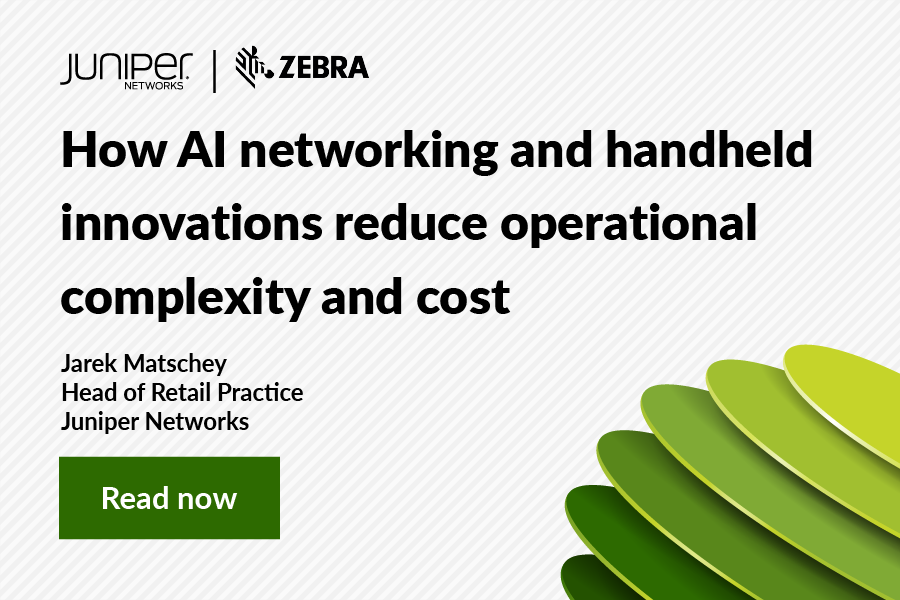When universities and colleges invest in transformative network technology, they want to know that there will be a return on their investment, and what format that return is likely to take. It’s all about ROI, and this blog takes a practical look at some of the ways that the network can be leveraged to protect and increase revenue, as well as reduce operational costs.
Driving Revenue Through Improved Retention and Recruitment
There are two main drivers of college and university revenue. The first is delivering student success, keeping students on the right trajectory and supporting them throughout their time in higher education. Previous blogs looked at how Juniper Networks’ unique AI-driven Indoor Location Services can be used to support student success. In addition to reducing attrition, this elevates results for the entire institution, helping to enhance reputation and drive increased recruitment for future intakes.
The second driver of revenue is, of course, to attract more prospects and recruit more students to attend the college or university. A great network experience is another reputational factor that will influence the choices of potential students (and parents) – good connectivity is seen as a basic essential, especially as the average student brings around five smart devices to campus with them. By leveraging location-based services to increase engagement, colleges and universities can provide richer on-campus experiences for students, prospects and visitors alike.
It’s also important to consider the potential for increasing the number of remote and overseas students. As travel has become more difficult, hybrid learning opens up new opportunities. With Juniper’s cloud-based networking, a new student can join the campus network within just a few minutes of receiving their access point. This means that universities can widen and extend their reach much further than before, domestically and internationally.
Find More Efficient and Productive Ways to “Keep the Lights On”
When universities employ skilled IT staff, no one wants them to spend their valuable hours on mundane tasks. One of the many features of a Juniper network driven by Mist AI™ is Marvis, the Virtual Network Assistant, which uses AI and ML to remediate, automate and continuously learn from experience. Marvis has many years of learning to draw on already, so there is no need for training: it’s good to go from day one and will simply keep improving over time.
With Marvis on the IT team, less time is spent on trouble tickets. There’s no longer a need to spend hours locating or trying to replicate a problem. Marvis pinpoints issues and either automatically fixes them or recommends suitable actions for remediation. This means that IT personnel are freed up to work proactively on projects that add value, perhaps by building student engagement or innovating on a new, differentiated service.
“With Juniper solutions, we can do things that we couldn’t do before, and we can become an education leader in our region.”
Christos Charalambous, Head of IT infrastructure service, University of Cyprus
This type of activity is so much more rewarding than spending hours every day doing repetitive tasks or dealing with complaints. This can reduce “churn and burn”, increasing employee engagement and improving retention within the IT team (not to mention the improved user experience that can be consistently delivered).
Another challenge that can lead to burnout and low morale is when IT teams have to operate a controller-based architecture and deal with the complexity of all its related dependencies. Every single controller is another box that must be managed and updated, each one potentially a single point of failure that could take down the entire network. This is one of the reasons that cloud-based architecture has made such an impact on universities and colleges: there’s simply less equipment to deal with, it’s much simpler and easier to manage and there’s no single point of failure. Instead, Marvis can automatically update the Mist architecture with patches (for example, security) every day. And if something does go wrong, the issue won’t take down the whole campus, unlike a controller problem that can affect everything in its “zone of destruction”.
With the previous generation of network architecture, Wi-Fi access points would need controllers in a data center, taking up space, using power and generating heat. The advent of Wi-Fi 6 is also leading to increased operating costs due to the need for upgrades and a marked increase in power consumption. By comparison, Juniper’s AI-driven network is not space hungry, doesn’t require huge cooling resources and has a very low power draw – including lower operating costs.
Troubleshooting Becomes a Breeze – Anywhere
Looking at how AI and machine learning can help reduce costs for universities and colleges, there’s no doubt that not having to invest huge amounts of time and effort into diagnosing problems is a major benefit.
Usually, troubleshooting begins with a user saying, “Hey, this Wi-Fi is terrible!” Then someone has to go out to investigate, and – if they have no luck – try and replicate the problem. This painstaking process can take days, or even weeks. Yet with Juniper’s AI-driven network, all the network operator has to do is ask Marvis, “How’s my network today?” to find out that there was a problem, that it was diagnosed within seconds, what caused it and that it has already been fixed – often before the user even noticed. In the case of unplugged cables or other remediation that can’t be automated, Marvis will suggest actions to the IT team.
This remarkable troubleshooting capability can even be used for problems affecting remote students, lecturers and staff. Previously, a university would not be able to diagnose problems on a home network, but if the user has a Juniper Access Point connected to the Mist Edge, the dynamic changes. For example, one of our customers had a professor experiencing network problems when teaching from home. Mist was able to identify what was going on – his broadband gateway was overloaded, with almost eighty percent of the traffic being streaming traffic. Once he stopped his children from streaming Netflix, Amazon Prime and HBO Max during lecture times, the problem was solved.
Other Ways to Cut Campus Spend
Location services didn’t really take off until the launch of Juniper’s unique virtualized Bluetooth solution. The much-hyped capabilities of physical beacons had fallen miserably short: failing to deliver meaningful location accuracy and always at risk of being dislodged, moved or damaged. But probably one of the most damaging realizations was that if a campus needed, for example, eight thousand physical beacons to obtain sufficient coverage, it could take days to replace all the batteries every six months.
Thankfully, this is no longer an issue. Beacons are built into every Juniper access point, with no batteries required and the virtualized Bluetooth providing accuracy down to a meter or even less. Installing a Juniper access point is quick and easy – it’s simply a question of unplugging the old AP, plugging in the new one, scanning in a QR code and it’s live within seconds. Juniper access points even fit other vendors’ brackets, so there’s no need to buy new ones – yet another useful saving.
Finally, with Juniper’s Indoor Location Services enabling more efficient use of space, savings can be made by optimizing the use of energy and utilities and by developing more efficient cleaning schedules. As part of their journey with Juniper, many universities are evolving, developing and integrating their computerized maintenance management system (CMMS), facilities management and building management systems with the network to improve efficiencies and save money.
Cost savings and improved revenue protection and generation are just the beginning: see why 17 of the most prominent 20 universities in the world run their networks on Juniper equipment.
Learn More
Infographic: Why Every College and University Needs the Juniper Network Driven by Mist AI
Blog: Six Key Points Emerging From This Year’s Higher Education Summit

























